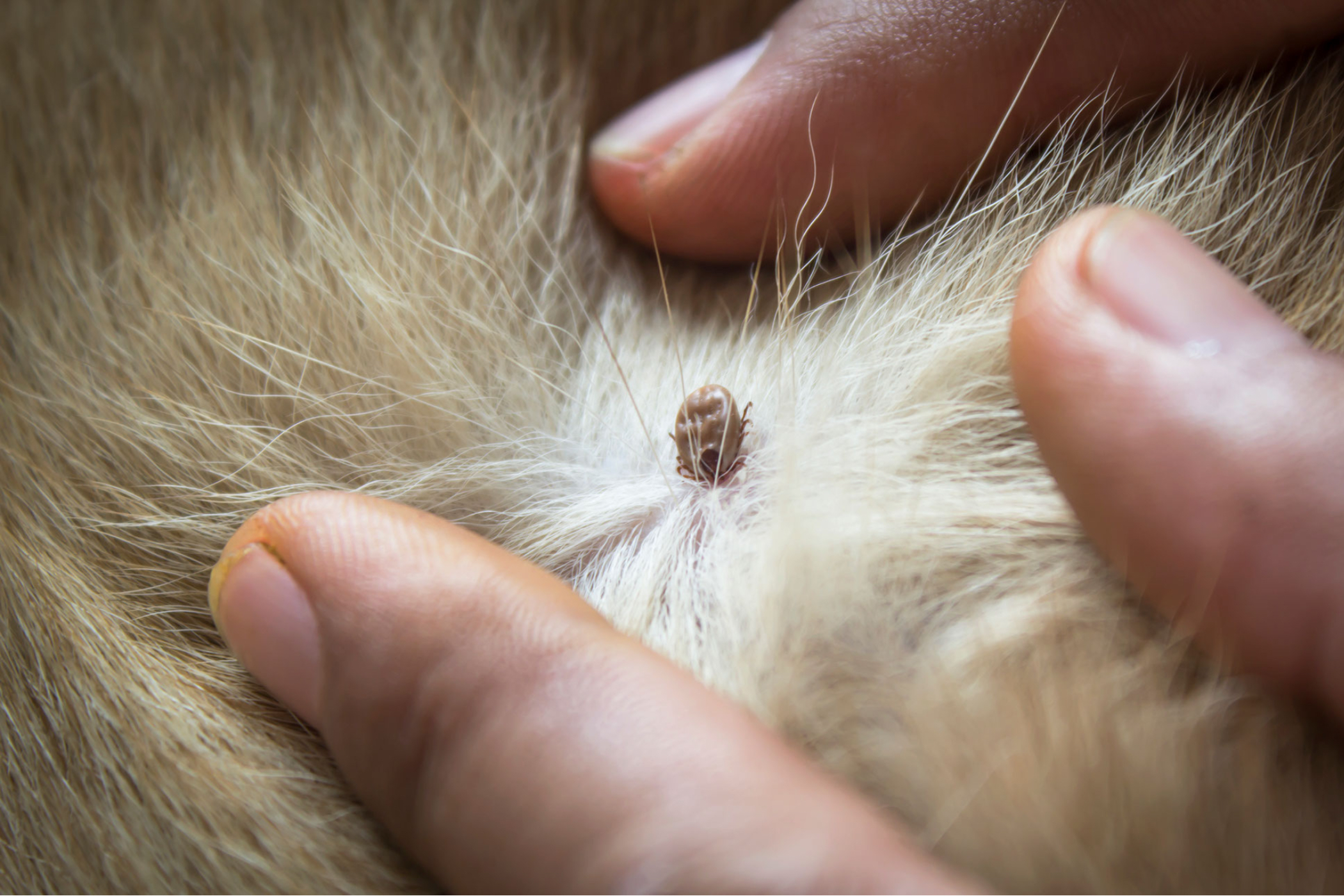Yikes! A Tick!
Before going over tick removal methods, it is prudent to say that dogs and cats should be on a tick preventative. Most of flea preventatives also have something that kills or repels ticks. Heartworm preventative for dogs also has some anti-tick ingredients. The best way to get rid of ticks is to never have them in the first place.
That being said, sometimes a tick does find its way onto a pet. There are lots of ways to remove ticks, but many of them can hurt the animal. People have been known to burn them with a match or lit cigarette. That often results in your pet getting burned and is not a good way to remove ticks.
Using petroleum jelly, nail polish or glue to “smother” a tick is also not recommended. It just makes a mess. Those pesky ticks do not like to let go. The smothering method may even cause more harm because the tick will try to dig in deeper. As it moves its mouth parts, there is a better chance that it will transmit disease to the animal.
Some people recommend twisting off the tick either with your fingers, a tick-twisting tool or tweezers. While that seems like a good idea, twisting can cause the tick to break apart, leaving the mouth parts embedded in the skin.
The CDC (Centers for Disease Control) recommends pulling it off. Using tweezers, grab the tick as close to the animal’s skin as possible without pinching your pet. Steady, slowly pulling with a firm grip, not yanking, will cause the tick to release. The CDC says that if you pull it too hard or fast, it will break off and leave the mouth parts left in the skin. In a case where part of the tick is stuck in the skin, try to get that piece off with tweezers. If you are not able to do it, just forget about it. Don’t dig around and irritate the animal’s skin even more.
Get a tick removal tool todayPaid link.
If you are worried about what species the tick is, preserve it in a small vial of alcohol. If it gives you the willies and you just want it gone, make sure it is dead before you dispose of it! Squish it, smash it, put it in bleach – whatever it takes.
Wash the area with soap and water as soon as you remove the tick. Also, wash the tweezers or any other utensils you used on the tick. Keep an eye on the area for a few days to see if it gets red, swollen or sore. If it looks bad, you will need to go to the vet for treatment.
If you saw one tick, there might be more. Make sure you brush and thoroughly check your pet. If a tick has been attached for more than 48 hours, there can be illness associated with it. A big, bubble of a tick has been attached for at least 48 hours, probably longer. If it is fairly flat, it probably has not been that long.
If you spent a lot of time outside with your pet, you should check yourself for ticks too.







